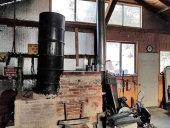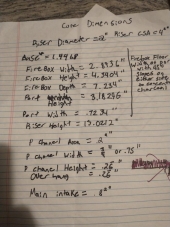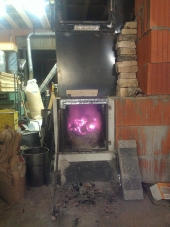Peter, sorry for babbling away. I based my understanding upon your sayings. I remember you saying that the burn got considerably worse with a deeper port, of more than 3 inches IIRC. This and the similarity of the plate orifice flow visualization with the ram's horns in the rocket led me to the conclusion of "the shorter the port, the better it should work" Which i was wrong.
Tho, there's a detail i'm sure changes things. The drag exerted by the gases in the dead spots behind the port. Also, the drag exerted by the boundary layer in the port itself. You remember when i was explaining that the gases in a port, form a "turbulent" boundary layer, shaped somewhat like a wing's profile.
But what you say makes perfect sense, if the port is too shallow, this shape can't appear. If i remember well, the boundary layer, from complete stall, at the contact point between the gas flow and the wall. And full speed gas flow, is about 3 cm from the wall. So, a port with less than 6 cm width can't have a perfect full speed laminar flow in the middle. I guess, if the port's lengh is longer than the port's width, the turbulent gas cushion against the walls of the port, tend to be more and more like a wing profile, thus "evenizing" the flow. Why long ports don't work.
The gases entering the port from the sides of the firebox's back wall, travel perpendicular to the port's flow. so that makes a sort of cushion of gases against the port's entrance, a dead spot, in the shape of a leading edge. I would think. Until they get dragged by the rest of the flow. Then if the port's walls are shorter than it's width, i guess the trailing edge can't form correctly, they form for some time then are perturbated by the turbulent flow in the middle. the static gases unsticking themselves from the port's wall, creating a sort of dead spot behind this cushion of gases. The mushroom shape seen in the plate orifice video. Well, it's all pure guesswork. But i think port's length could work well between 2/3rd of port's width and port width. More, i'm not too sure.
For the ones wanting to go more in depth,
http://donkey32.proboards.com/thread/1425/flow-visualization
So, yes again, i was talking gibberish!









